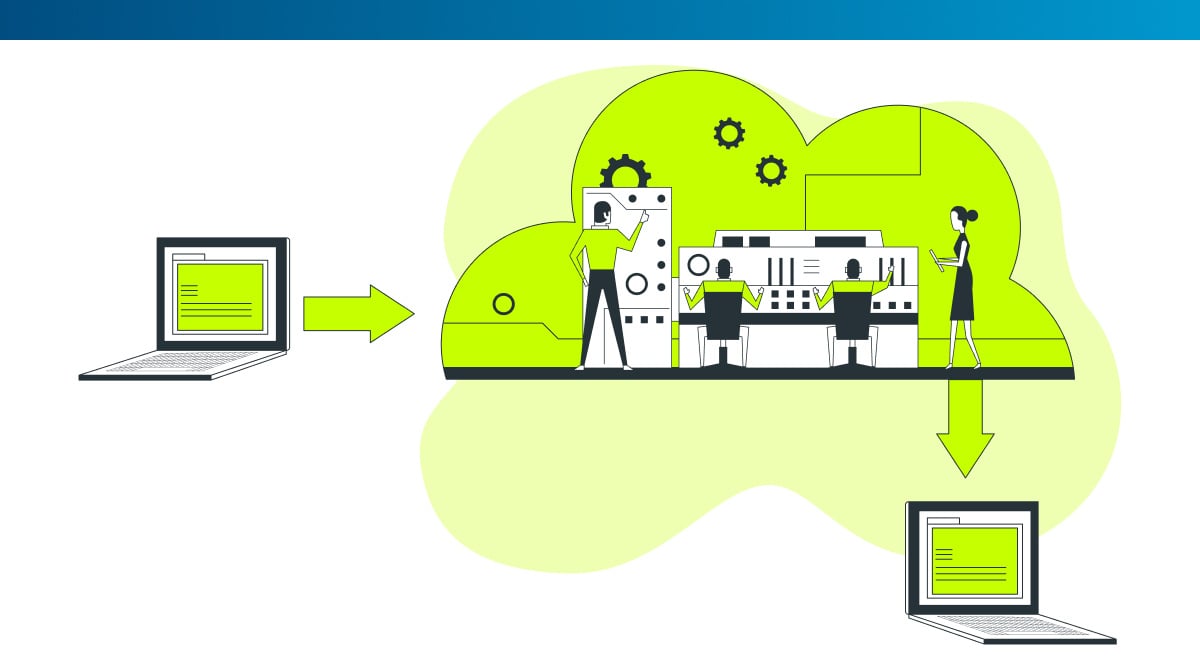Negative churn is truly the holy grail of SaaS metrics. Once you have an understanding of how to achieve it, you will have unlocked virtually unlimited revenue growth potential. It’s time to stop thinking about how to reduce churn and start thinking about how to eliminate it.
Don’t get me wrong, getting to a point of net negative revenue churn is not an easy task. You’re going to have to think outside the box and trust the process. If you’re tired of settling for just getting by and ready to take your SaaS business to the next level, I’d like to take you through why net negative churn is the way to do just that.
In the next few minutes, you’re going to learn all about what exactly churn is, why you want it negative, and how to calculate it. We’ll talk about how to avoid common pitfalls that SaaS companies run into when trying to achieve a negative churn rate, and you’ll learn strategies for reaching this golden metric for your own startup.
Let’s get started.
What is Net Negative Churn?
Here’s where the fun begins. A net negative churn rate happens when your recurring revenue increases because of actions by your current customers and that additional revenue outpaces what you’ve lost from customer churn.
Put simply: when existing customers opt for upgrades, additional features, and add-ons, your MRR increases without adding new customers. When that extra revenue is more than the amount lost to churn, you have achieved net negative churn.
A bonus to this strategy is a reduction in customer acquisition costs, which doesn’t hurt the bottom line. To be clear, the goal is not to halt new customer acquisition completely. The point is that with net negative churn, you can achieve growth by focusing on customer success rather than constantly stressing about conversions.
Customer acquisition will — and should — always be an important part of any subscription business. But SaaS companies that achieve net negative churn have breathing room and steady growth that continues regardless of their conversion rate.
Understanding Churn
In SaaS environments, churn is a fancy way of referring to loss. For example, your customer churn rate is the rate of customers you’re losing over a set period. Revenue churn is the loss of monthly recurring revenue (MRR), either by cancellations or downgrades.
Customer Churn vs Revenue Churn
When we talk about churn, we’re really talking about two primary churn metrics that measure the health of your business and its potential for growth.

Customer churn: On average, we see a customer churn rate of around 5% for most SaaS companies. Think of customer churn in terms of actions taken by your customer base that result in lost revenue. These actions can include canceling subscriptions or downgrading accounts.
Revenue (or MRR) churn: MRR churn looks at the percentage of revenue that was lost during the period as a result of customer churn. When customers don’t renew or choose to downgrade their existing subscriptions, your MRR is reduced.
Ideally, both of these metrics stay low. No one wants to see their existing customer base jump ship, and no one wants to lose recurring revenue. Keeping customer churn low involves reviewing your retention rate and analyzing what is working for your current customers. MRR churn is limited when you focus on cross-sells and upsells to make sure your customers are getting the most out of their subscriptions. You can also automate renewals to encourage customer retention for those who may not remember to renew every month.
Basic Formula for Churn Rate
To calculate your churn rate, you’ll use this formula:
(Lost Customers ÷ Total Customers) X 100 = Churn Rate
Let’s look at an example.
Your business started the month with 25,000 customers. By month’s end, you had 23,750. Your churn rate is calculated when you subtract the remaining customers by the original number of customers and then apply the formula.
(1,250 ÷ 25,000) X 100 = 5%
Your churn rate is 5%.
How to Calculate Negative Churn (with Formula)
The negative churn formula looks like this:
(Churned MRR – Expansion MRR) ÷ Last Month’s MRR
For a quick refresher, remember that expansion revenue refers to the revenue gained by upselling or cross-selling your existing customers. This relies on providing new features or additional products to subscribers. Your customer success team should be regularly reaching out to current customers to upsell or cross-sell based on customer needs.
Let’s look at a scenario and calculate negative churn using the formula.
In June, I lost $10,000 to downgrades and cancellations, but gained $12,000 in expansion MRR. May’s total MRR was $65,000.
($10,000 – $12,000) ÷ $65,000 = -3% churn
Despite losing quite a lot of revenue to customer churn, my expansion MRR more than made up for it. Without adding any new customers, I still saw growth.
Negative Churn Challenges and Barriers
Let’s talk about the kinds of challenges you might run into while working toward your goal of net negative churn. We’ve talked before about customer lifetime value, and some of the barriers to achieving negative churn can be addressed by having a realistic picture of each customer’s LTV.

- Involuntary churn happens when customers aren’t paying attention and their subscriptions are cancelled inadvertently. Maybe their credit card expired or their billing address changed. You can put measures in place to prevent involuntary churn, and customer care is a big part of that.
- One trap SaaS founders fall into is thinking they can just front-load as many new customers as possible every month to make up for any churn. Frankly, that’s just not a sustainable model. If you want to achieve negative churn, you have to invest in your existing customer base.
- It’s entirely possible that the upgrades you’re offering aren’t what your customers need, so they have little incentive to bump up their subscriptions. Offering a wide range of options can help. Maybe a customer doesn’t want to shell out the big bucks for the premium subscription that offers unlimited seats, but the basic level doesn’t service their whole team. Are you meeting those customers where they are?
How to Achieve Negative Churn
Now, this is where the magic happens. Luckily, there is a plethora of steps you can take to reach your goal of negative churn.
You’re going to have to crunch some numbers and strike a balance between focusing on your existing customers and investing in customer acquisition, but it can be done, and the payoff will be worth it.
- Perfect Your Pricing Strategy: I get it, this seems like a no-brainer. But your pricing model is a critical piece of the expansion revenue puzzle. Consider offering free trials to your existing customers of more premium subscription options, or give them a reduced price for a trial period. Your product is only worth what your customers are willing to pay every month. Calculate your net revenue retention (NRR) to help you figure out exactly how to expand your customers.
- Reduce MRR Churn: Again, this seems obvious. As we’ve discussed, the focus really is on your current customer base. You need to keep them engaged. If you can’t upsell them, at minimum you need to keep them on board at their current level. Automating renewals, providing top-tier customer support, and predicting needs will go a long way in reducing churn.
- Focus on Upsells, Cross-sells, and Add-ons: This is where we find out if your customers are satisfied enough to want more. You know what you have to offer, and you know what you have the ability to add. Instead of letting a customer settle for fewer seats than they need, can you offer a seat expansion add-on so they don’t have to spring for an upgrade they don’t need? Set benchmarks for the growth you want to see from your current customers each month and find ways to make them happen. The more you can increase your MRR with your existing customers, the closer you’ll get to negative churn.
If you need help achieving the holy grail of negative churn, check out our Expansion Revenue Maximizer plan. It's the key to doubling your revenue without doubling your effort.
Conclusion
Ideally, you’re feeling confident now that a net negative churn rate is within reach. If anything here leaves a lasting impression, I hope it’s this: you will not achieve negative churn without prioritizing your existing customers. Keep them happy, upsell and cross-sell when you can, and check in regularly to make sure you’re meeting their needs.
Churn is inevitable in any SaaS business, but it doesn’t have to impact your growth. Even businesses with a higher than average churn rate and slower acquisition rates have achieved net negative churn by focusing inward on the customers already on board. Once you’ve reached negative churn, your business will be able to stand up to stalls in acquisition and increases in customer attrition.
What you should do now
- Book a Growth Session and learn the 3 things you should do today to unblock your SaaS potential and start scaling.
- Read more articles in our blog.
- If you know someone who’d enjoy this article, share it with them via Facebook, Twitter/X, LinkedIn, or email.

